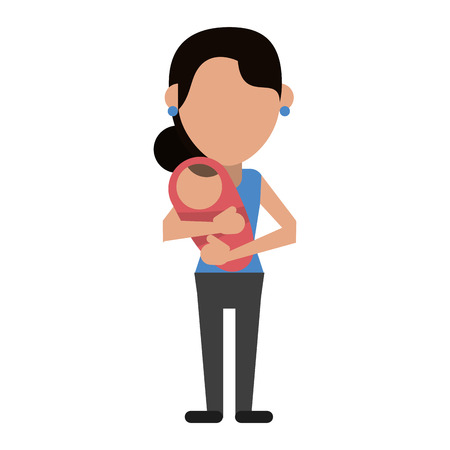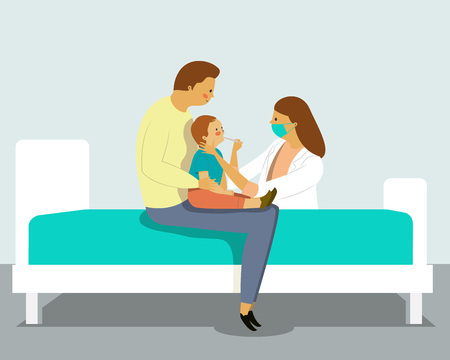Recognizing a Choking Emergency
Choking is a life-threatening emergency that can happen to anyone, regardless of age. Recognizing the signs and symptoms quickly is crucial for effective intervention. In both adults and children, some key indicators signal a choking episode. Watch for sudden inability to speak, cough, or breathe—these are immediate red flags. A person who is choking may clutch their throat, a universal sign of distress known as the “choking sign.” You might also notice high-pitched sounds or complete silence when they attempt to breathe in. In severe cases, their lips or face may turn blue due to lack of oxygen. Children may become panicked, unable to cry or make noise, and may appear suddenly weak or limp. Understanding these warning signs helps you act fast and determine when it’s time to call 911 for emergency assistance.
Immediate Steps to Take
When someone is choking, quick and appropriate action can make all the difference. Recognizing the severity of the situation and knowing what steps to take are crucial before emergency help arrives. Here’s an overview of first aid interventions you should know:
Encourage Coughing
If the person can still speak, cough, or breathe, encourage them to keep coughing forcefully. This is their body’s natural way to clear the airway. Do not interfere or slap their back if they are actively coughing, as this could worsen the blockage.
The Heimlich Maneuver (Abdominal Thrusts)
If the person cannot cough, speak, or breathe—or if they make high-pitched noises or clutch their throat—act quickly. The Heimlich maneuver is a proven technique for dislodging objects from the airway in conscious adults and children over one year old.
| Step | Description |
|---|---|
| 1. Stand behind the person | Place your arms around their waist. |
| 2. Make a fist | Position it slightly above their navel (belly button). |
| 3. Grasp your fist with your other hand | Deliver quick, inward and upward thrusts. |
| 4. Repeat until object is expelled | If the person becomes unresponsive, call 911 and start CPR. |
Actions to Avoid
- Do not give water or food: Introducing anything by mouth may push the obstruction deeper.
- Avoid blind finger sweeps: Never put your finger in the persons mouth unless you see the object; this can lodge it further down.
- No back blows for adults who are coughing: Only use back blows for infants under one year old or when directed by a professional.
Remember, staying calm and taking these immediate steps can save a life while waiting for emergency responders. If you’re unsure or if efforts are unsuccessful, don’t hesitate to call 911 right away.

3. When to Call 911
Recognizing when it’s time to call 911 during a choking emergency is crucial for saving a life. If someone is unable to breathe, cough, or speak, immediate action is needed. You should always call 911 if the person becomes unresponsive, shows signs of severe distress, or if your first aid efforts—such as back blows or abdominal thrusts—are not effective in clearing the airway.
Critical Signs Requiring Emergency Help
Call 911 right away if you observe any of the following:
- The person cannot make any sounds or only makes high-pitched noises.
- The person is clutching their throat, turning blue around the lips or face, or losing consciousness.
- The victim collapses or stops breathing at any point during your response.
If First Aid Isn’t Working
If you have attempted the Heimlich maneuver or back blows and the object remains lodged, do not delay—dial 911 immediately. Time is critical when oxygen flow is blocked; professional help can provide advanced support such as airway management and resuscitation if needed.
Stay on the Line With Dispatchers
When you call 911, stay calm and follow the dispatcher’s instructions closely. They can guide you through additional steps while emergency responders are on their way. Remember, in any situation where you feel uncertain about the person’s safety or your ability to help, it’s always better to err on the side of caution and contact emergency services without hesitation.
4. What to Tell 911 Dispatchers
When you call 911 for a choking emergency, providing clear and accurate information can help emergency responders arrive quickly and give the right assistance. Here are the key details to communicate:
Essential Information to Share
Be prepared to answer the dispatcher’s questions clearly and calmly. Giving complete details ensures that help is sent without delay.
Key Detail |
What to Say |
|---|---|
| Location | Give your exact address, including apartment or suite number, and any special instructions for finding your location (for example, “third floor, north side, near the elevators”). |
| Person’s Age | State the age of the person choking (for example, “A 45-year-old male” or “My 2-year-old daughter”). This helps responders prepare the right equipment and approach. |
| Condition | Describe the current state of the person: Are they able to cough or speak? Are they turning blue? Are they conscious or unconscious? |
| First Aid Given | Explain what has already been done (for example, “I performed the Heimlich maneuver” or “We tried back blows but it didn’t work”). This lets dispatchers know what steps have been taken. |
| Other Medical Concerns | Mention if the person has other health conditions (such as heart problems or allergies) that could affect treatment. |
Why These Details Matter
The more specific you are, the better prepared emergency teams will be when they arrive. Dispatchers may also guide you through additional first aid steps while help is on the way. Stay on the line until you are told it’s okay to hang up.
5. While Waiting for Help
Once you’ve called 911 and help is on the way, it’s crucial to stay focused and provide ongoing support to the person who is choking. Here are some instructions and comfort measures to follow while waiting for emergency responders, with tips to keep both you and the choking individual as safe and calm as possible.
Stay Calm and Reassure the Person
Your composure can make a huge difference. Speak clearly and calmly, letting the person know that help is coming. Try to maintain eye contact and use simple, encouraging words like, “You’re doing great; just hang in there.” This reassurance can reduce panic and help keep their airway as open as possible.
Monitor Their Condition Closely
If they are still conscious but struggling to breathe or cough, encourage them to continue coughing forcefully. Do not leave them alone at any point—stay nearby and ready to assist if their condition worsens.
Be Ready to Act if Their Condition Changes
If the person becomes unresponsive or stops breathing, be prepared to start CPR immediately if you are trained. Follow the instructions from the 911 dispatcher closely—they can guide you through life-saving steps until paramedics arrive.
Keep the Area Safe
Make sure there is enough space for emergency personnel when they arrive by clearing away any obstacles. If possible, move pets or bystanders out of the immediate area so responders have clear access.
Don’t Offer Food or Drink
Avoid giving anything by mouth—even water—as this could worsen the blockage. Focus only on monitoring their breathing and providing comfort.
Take Care of Yourself Too
It’s natural to feel anxious during emergencies. Take deep breaths, focus on what you can control, and remember: acting quickly and staying calm gives your loved one or friend the best chance until professional help arrives.
6. Aftercare and Follow-up
Even after a choking emergency has been resolved, it’s important to pay close attention to the person who experienced the incident. Choking can cause hidden injuries or lead to complications, so knowing the appropriate steps for aftercare and follow-up is essential.
Monitor for Complications
After a choking episode, watch for signs of ongoing distress or injury. If the person develops difficulty breathing, persistent coughing, hoarseness, chest pain, or shows signs of infection such as fever or chills, seek medical attention immediately. These symptoms could indicate that part of the object remains lodged in the airway or that damage occurred during the rescue efforts.
When to Seek Further Medical Evaluation
Even if the individual appears to recover fully, it is wise to consult with a healthcare provider—especially for young children, older adults, or anyone with pre-existing health conditions. A doctor can check for aspiration (when food or an object enters the lungs), throat injuries, or other complications that might not be immediately obvious.
Community Resources for First Aid Training
Being prepared can save lives. Consider enrolling in a local first aid and CPR course through organizations like the American Red Cross or your community’s fire department. Many U.S. communities offer hands-on classes that teach you how to respond confidently to choking emergencies and other life-threatening situations. Some public libraries and community centers also host free workshops. By gaining these skills, you’ll be better equipped to help your loved ones—and your neighbors—in a crisis.
Remember, quick action is critical during a choking emergency, but proper aftercare and follow-up are just as important for ensuring a full recovery and peace of mind.

